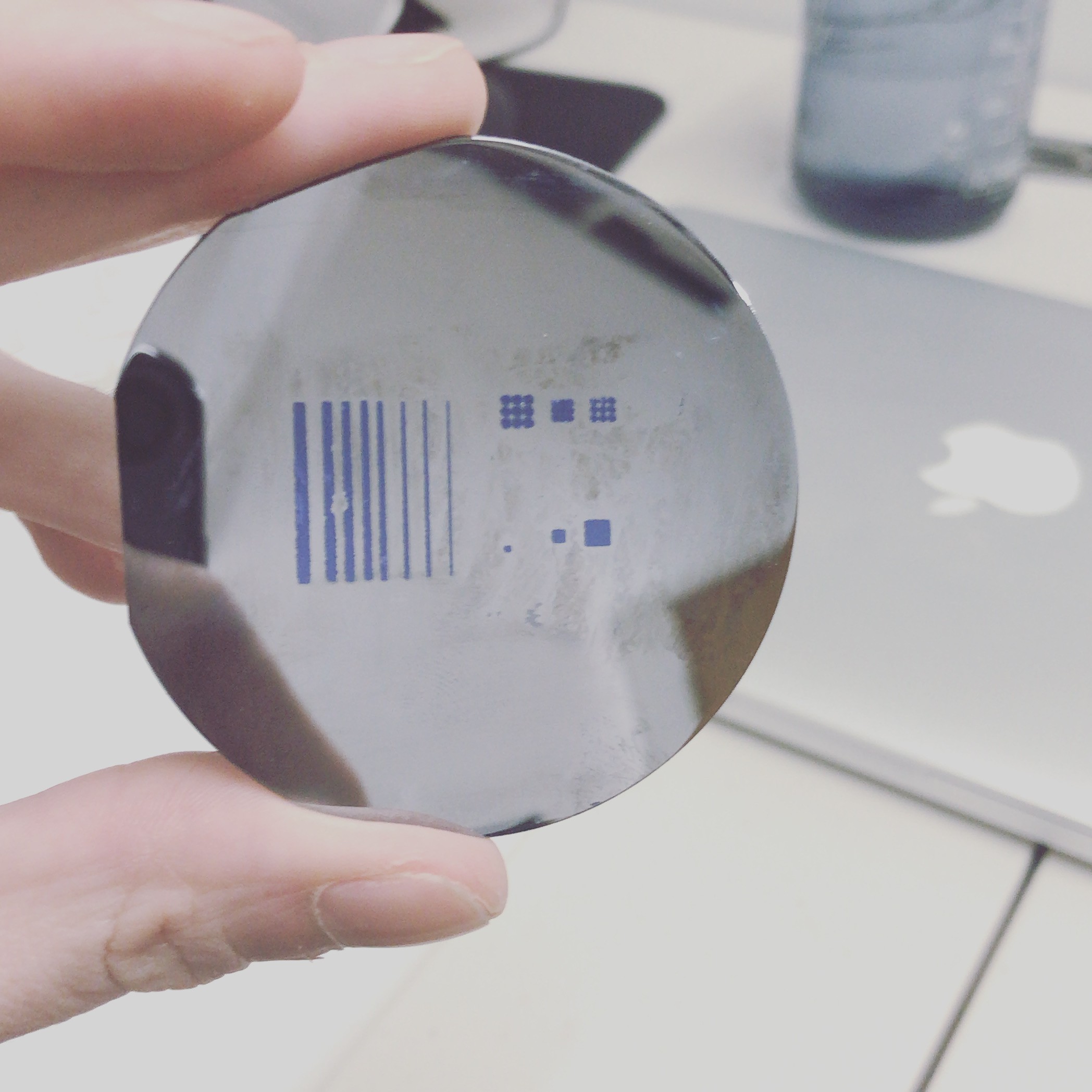Decided to start this off by just jumping in and seeing how it goes.
My rough plan of action/goal is as follows: Create sub 150μm diameter microfluidic channels using maskless photolithography. To do this I will use dry film photoresist, silicon wafers, an iron, and a 3D resin printer.
My first steps are:
- Laminate the silicon wafers with the dry film photoresist (DFR) using a programmable iron
- use the high resolution LCD screen from a cheap resin printer (photon S) to project an image onto the DFR, hardening the film in that area.
- Use sodium carbonate to wash away any unexposed DFR
- Pour polydimethylsiloxane (PDMS) over the silicon wafer
- Slap that piece of PDMS onto another slab of PDMS and boom, we've got ourselves a microfluidic chip.
In theory, anyway.
I will be doing this both at MakeIt Labs in Nashua NH and at my apartment. The goal is to find a good recipe that can be followed by anyone with access to a resin printer and allow them to make their own chips.
Throughout this project I'll upload logs as I go and probably photo dump a bunch. Some logs will be lab reports, others will be thoughts and musings on material choice, fluid handling etc. Feel free to comment or PM with any thoughts!

 Alexander Bissell
Alexander Bissell
Discussions
Become a Hackaday.io Member
Create an account to leave a comment. Already have an account? Log In.